 W
WThe Barbegal aqueduct and mills is a Roman watermill complex located on the territory of the commune of Fontvieille, near the town of Arles, in southern France. The complex has been referred to as "the greatest known concentration of mechanical power in the ancient world" and the sixteen overshot wheels are considered the biggest ancient mill complex.
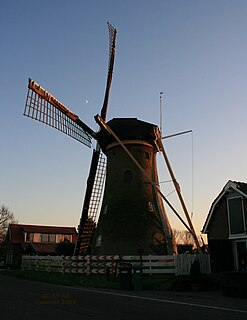 W
WDe Hoop is a gristmill in Abbenbroek, the Netherlands. The mill was built in 1843. The mill is a rijksmonument.
 W
WDe Hoop is a gristmill in Almelo, the Netherlands. The mill was built in 1870 with use of a demolished mill from 1797 and was rebuilt after a fire in 1910.
 W
WDe Hoop is a gristmill in Bavel, the Netherlands. The mill was built in 1865.
 W
WDe Hoop is a gristmill in Den Hout, the Netherlands. The mill was built in 1837. In 1975, the owner sold the mill to the municipality, which had it restored in 1985. It was declared a monument in 1971.
 W
WDe Hoop is a windmill in Den Oever, the Netherlands. The mill was built in 1675 as a corn mill and served until the end of the 1930s. In 1952, the Oud-Wieringen De Hoop foundation purchased it in order to preserve it. In 1960 the mill was restored.
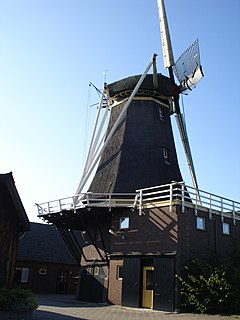 W
WDe Hoop is a gristmill in Oud-Zevenaar, the Netherlands. It was owned by the Pijnappel family from 1852 until 2014, at which point it was sold to the Botter family. The current miller is Frits Botter.
 W
WThe Esterhazy Flour Mill is located at 517 Smith-Dorrien Street, Esterhazy, Saskatchewan. Construction of the mill was started in 1904 and was completed in 1907. The current owner is the Town of Esterhazy and is run by the Friends of the Flour Mill. The Esterhazy Flour Mill is the only remaining wood-frame construction flour mill in Saskatchewan. The Provincial Heritage Property designation was announced in 2005 and on July 8, 2009 the Esterhazy Flour Mill was designated as a National Historic Site.
 W
WA flour dresser is a mechanical device used in grain mills for bolting, which is the process of separating the finished flour from the other grain components following milling. The milling of grain into flour has been termed the oldest continuously conducted industry in the world. Flour dressers appear in water-powered mills in the United Kingdom dating to the 17th century and their use continued into the 20th Century in the UK and other countries as the grain milling industry converted from water power to steam and other forms of power to drive mill machinery.
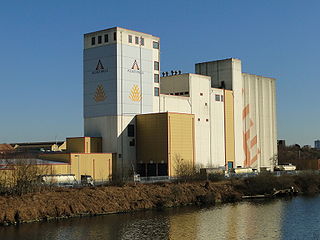 W
WA gristmill grinds cereal grain into flour and middlings. The term can refer to either the grinding mechanism or the building that holds it. Grist is grain that has been separated from its chaff in preparation for grinding.
 W
WThe Grands Moulins de Paris is a disused flour mill located in Marquette-lez-Lille in the Nord department, France. It has been an official Historical Monument since 2001.
 W
WThe Grist Mill and Gardens Historic Site, located in the Similkameen River Valley near the Village of Keremeos, is a heritage site owned by the Province of British Columbia. It is located just north of the junction of the Crowsnest Highway and Highway 3A.
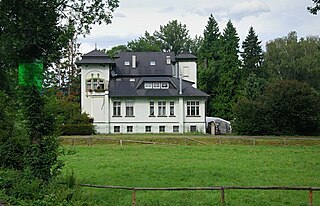 W
WHabermann's Mill and Villa is a small hamlet in Bludov municipality in the Czech Republic. The place is also called Bludov's mill.
 W
WThe Kawana flour mill near Matahiwi was built in 1854, and is the last remaining flour mill on the Whanganui River and the only remaining 1850s mill machinery in New Zealand.
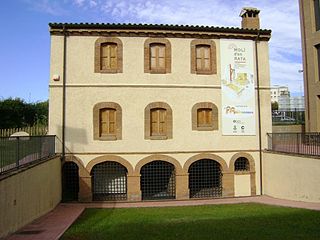 W
WThe Molí d'en Rata Heritage Interpretation Centre, in Ripollet, is a municipal facility dedicated to research into and the conservation, management and diffusion of the heritage of Ripollet. It encompasses two areas: the Molí d'en Rata, one of El Vallès Occidental’s last operational flour mills, and the Heritage Interpretation Centre, a newly constructed building with two exhibition rooms: one for the permanent exhibition and the other for temporary exhibitions. It is part of the Barcelona Provincial Council Local Museum Network.
 W
WThe Molino Stucky is a Neo-Gothic building in Venice, on the western end of Giudecca island, near the ancient village Fortuny. It was designed by Ernst Wullekopf and built between 1884 and 1895 by the Swiss businessman Giovanni Stucky, whose father had married into the Italian Forti family and moved to the Veneto. It was first built as a flour mill supplied by boats across the lagoon and also operated as a pasta factory.
 W
WMorningstar Mill is a 2.98-acre (1.21 ha) heritage site located in St. Catharines, Ontario, Canada. The site includes the Morningstar Mill, a sawmill, the home of the Morningstar family, a barn used for blacksmith demonstrations, and the Decew Falls gorge along the Niagara Escarpment.
 W
WThe Ritchie Mill is the oldest surviving flour mill in the province of Alberta.
 W
WTot Voordeel en Genoegen is a windmill built in 1798 on the Molendijk 15 in Alphen, Gelderland, in the Netherlands. It is a large post mill, built above a roundhouse, used for grinding wheat flour. It is the only windmill in the Netherlands that drives three pairs of millstones. The mechanism is mostly wooden, since iron was expensive when it was built. The windmill, which is still functional, can be rotated on its post to face the wind for maximum effect.
 W
WVeldkamps Meuln is a 19th-century tower mill in the village of Bellingwolde in the Netherlands.
 W
WWatson's Mill is an historic flour and gristmill in Manotick, Ontario, Canada. It is the only working museum in the Ottawa area and one of the very few operating industrial grist mills in North America. Watson's Mill still sells stone-ground whole wheat flour which is made on site. The mill is also well known for its ghost Annabelle. The legend is that Ann Currier, wife of Joseph, haunts the mill, following her death in a tragic accident there in 1861. Watson's Mill is Manotick's most recognized landmark. Its image is used as a symbol for the village.